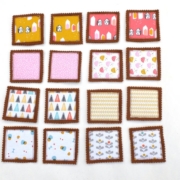5 Montessori principles to help you choose books your kids will love
Maria Montessori believed that education must begin at birth, and what better way to encourage the natural curiosity of our children than through reading? We are privileged to live in a great wide world that is perforated with many talented writers and illustrators, and we have access to a bounty of books online and in stores and libraries. That said, the choice can be overwhelming.

There are, however, some Montessori principles that can help us choose books that capture the spirit of Montessori learning:
Reality – children are interested in the world around them; books with pictures of real objects and stories about real-life experiences (a trip to the museum or going to a birthday party) will encourage exploration and curiosity.
Beauty – beautifully illustrated books will grab your child’s attention and create a vivid link between words and imagination. Pictures in books are also a good way to encourage art appreciation.
Detail – interesting pictures with small details enable children to notice new things every time the book is read, which presents the opportunity for new discussions.
Language – children will enjoy descriptive words, detailed language and rhyme, rhythm and poetry. Avoid baby language; children learn through mimicry and they will enunciate as you do.
Age-appropriate – start with few words and build up the narrative as your child grows. A single word is fine for a baby; that single word will become a sentence and then a few sentences, and finally a complex story.
Reading a story with your child is truly special because not only are they learning but they are spending time with their most favourite people in the world, their parents. Here are some of our favourite Montessori-style books for 3-6 years:
- Dear Zoo (Rod Campbell) – simple board book about animals with lift-the-flap fun.
- The Very Hungry Caterpillar (Eric Carle) – a classic, with beautiful illustrations.
- Hairy Maclary (Lynley Dodd) – rhyming story with realistic pictures of dogs who go on adventures.
- Tree: Seasons Come, Seasons Go (Patricia Hegarty) – following the life-cycle of a tree through spring, summer, autumn and winter.
- One Gorilla (Anthony Browne) – beautiful, realistic illustrations and counting practice.
- Shades of People (Shelley Rotner) – displaying photographs of children from around the world, great for diversity conversation.
- They All Saw A Cat (Brendan Wensel) – depicts the many perspectives through which animals and people view the world.
- Same, Same but Different (Jenny Sue Kostecki-Shaw) – two pen pals discover all of the interesting things that are different in their respective worlds, and all of the things that are the same.
- See Inside Your Body (Katie Daynes) – fun, clear and informative.
- An Egg is Quiet (Dianna Aston) – a fresh look at something familiar.
Photo by Jonathan Borba on Unsplash















